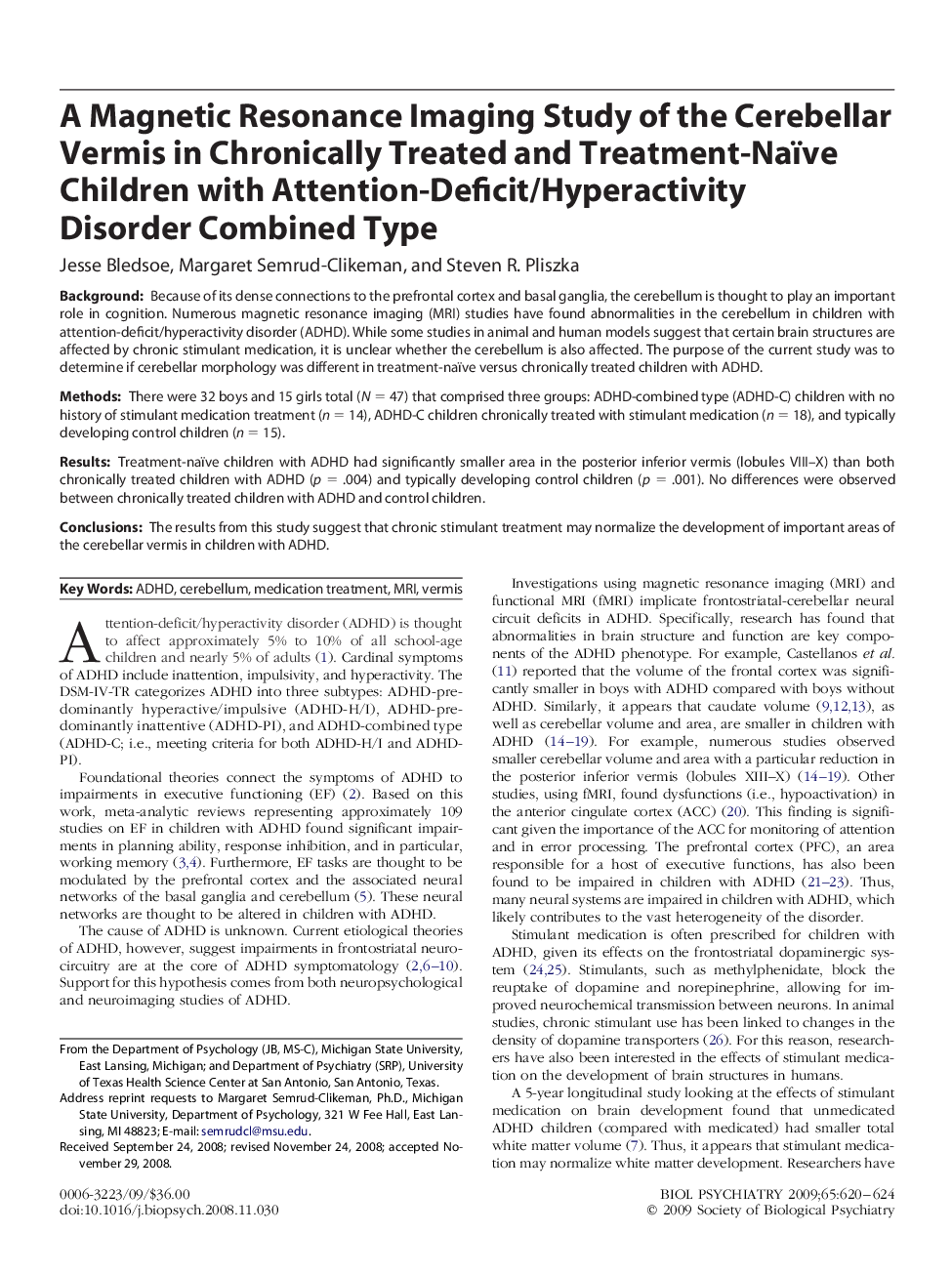| Article ID | Journal | Published Year | Pages | File Type |
|---|---|---|---|---|
| 4179733 | Biological Psychiatry | 2009 | 5 Pages |
BackgroundBecause of its dense connections to the prefrontal cortex and basal ganglia, the cerebellum is thought to play an important role in cognition. Numerous magnetic resonance imaging (MRI) studies have found abnormalities in the cerebellum in children with attention-deficit/hyperactivity disorder (ADHD). While some studies in animal and human models suggest that certain brain structures are affected by chronic stimulant medication, it is unclear whether the cerebellum is also affected. The purpose of the current study was to determine if cerebellar morphology was different in treatment-naïve versus chronically treated children with ADHD.MethodsThere were 32 boys and 15 girls total (N = 47) that comprised three groups: ADHD-combined type (ADHD-C) children with no history of stimulant medication treatment (n = 14), ADHD-C children chronically treated with stimulant medication (n = 18), and typically developing control children (n = 15).ResultsTreatment-naïve children with ADHD had significantly smaller area in the posterior inferior vermis (lobules VIII–X) than both chronically treated children with ADHD (p = .004) and typically developing control children (p = .001). No differences were observed between chronically treated children with ADHD and control children.ConclusionsThe results from this study suggest that chronic stimulant treatment may normalize the development of important areas of the cerebellar vermis in children with ADHD.
